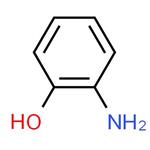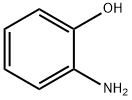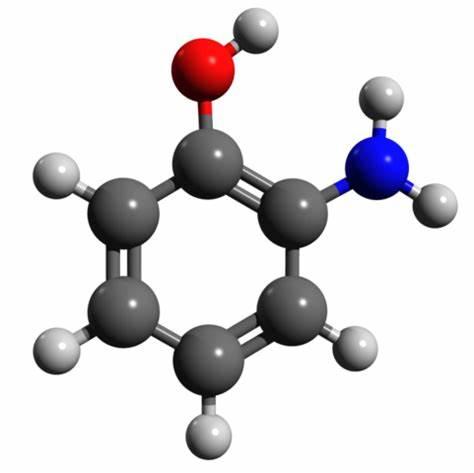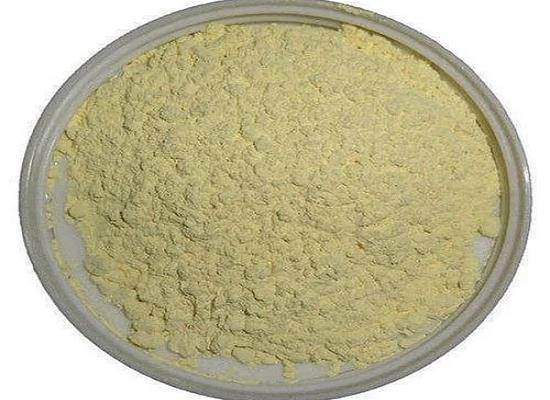2-Aminophenol: toxicity and detection methods
General Description
The toxicity of 2-Aminophenol is a significant concern, as it can lead to methemoglobinemia, characterized by tissue hypoxia and various symptoms such as shortness of breath, cyanosis, and mental status changes. It can also cause contact dermatitis and bronchial asthma. However, there is no evidence of it being carcinogenic to humans. To detect 2-Aminophenol, a CaCu2O3 nanorods-based electrochemical sensor and a graphene nanoribbons modified electrode have been developed. Both sensors demonstrate excellent sensitivity, stability, reproducibility, and low detection limits for 2-Aminophenol. These methods offer simultaneous detection of other compounds and have potential applications in water samples.

Figure 1. 2-Aminophenol
Toxicity
2-Aminophenol is a chemical compound that has toxic effects on the human body. When it interacts with both adult and fetal hemoglobin, it forms methemoglobin, which is unable to bind oxygen like normal hemoglobin. This leads to a condition called methemoglobinemia, characterized by elevated levels of methemoglobin and resulting in tissue hypoxia. Compared to its isomers, 3-aminophenol and 4-aminophenol, 2-aminophenol is the most effective in forming methemoglobin. Methemoglobinemia can cause various symptoms, including shortness of breath, cyanosis (blue lips, fingernails, and skin), mental status changes, headache, fatigue, exercise intolerance, dizziness, and loss of consciousness. Severe cases of methemoglobinemia can even lead to dysrhythmias, seizures, coma, and death. In addition to methemoglobinemia, 2-aminophenol can act as a skin sensitizer, causing contact dermatitis. Inhalation of large amounts of the substance can also result in bronchial asthma. The substance can enter the body through ingestion, inhalation of its aerosol, or absorption through the skin. It is important to note that there is no indication of 2-aminophenol being carcinogenic to humans. However, it is essential to take precautions to avoid exposure and minimize the risk of adverse health effects. 1
Detection methods
CaCu2O3 nanorods based electrochemical sensor
An electrochemical sensor was developed using nanostructured CaCu2O3 as the electrode material for the simultaneous determination of 2-Aminophenol, 2-Chlorophenol (o-CP), and 2-Nitrophenol (o-NP). The CaCu2O3 nanorods were synthesized through a chemical precipitation method and characterized using various techniques such as powder X-ray diffraction (XRD), X-ray photoelectron microscopy (XPS), field emission electron microscopy (FESEM), and high-resolution transmission electron microscopy (HRTEM). To fabricate the sensor, glassy carbon electrodes (GCE) with a diameter of 3 mm were modified by drop-casting the CaCu2O3 nanorods. Cyclic voltammetry (CV) studies were conducted on the CaCu2O3/GCE, which exhibited excellent electrochemical behavior for the oxidation of 2-Aminophenol, 2-CP, and 2-NP at different potentials that were well separated from each other. The CaCu2O3/GCE demonstrated low detection limits of 5.74 nM (0.626 ppb) for 2-Aminophenol, 1.38 nM (0.177 ppb) for 2-CP, and 1.03 nM (0.143 ppb) for 2-NP over wide measurable linear ranges. The cyclic stability studies showed excellent stability of the fabricated electrode, with a loss of only 7%, 13%, and 14% from the initial current responses after conducting 100 cycles of CV for 2-Aminophenol, 2-CP, and 2-NP in PBS (pH 7.0). Reproducibility studies of six different CaCu2O3/GCEs exhibited good recoveries. The fabricated electrode demonstrated excellent sensitivity, stability, and reproducibility, and it was successfully applied for the simultaneous determination of 2-Aminophenol, 2-CP, and 2-NP in tap water and agricultural water samples. 2
Graphene nanoribbons modified electrode
The accurate detection of 2-aminophenol is of great importance due to their widespread use as industrial raw materials and the potential environmental hazards they pose. Existing electrochemical methods for detecting these compounds individually have limitations when both 2-aminophenol and 4-aminophenol are present in the same system. To overcome this challenge, a novel detection method has been developed using a composite material called graphene nanoribbons (GNRs) modified with cyclodextrins (CDs). GNRs are strips of graphene with high length-to-width ratios and straight edges, offering excellent electrical properties and a large theoretical specific surface area. CDs, on the other hand, are oligosaccharides known for their selective binding capabilities. By combining GNRs with CDs, a synergistic effect is achieved, enhancing the electrochemical performance of the composite material. The composite, referred to as P-β-CD-l-Arg/CNTs@GNRs, is obtained by electropolymerizing β-CD and l-arginine (l-Arg) on the surface of CNTs@GNRs, a core-shell heterostructure. The l-Arg not only facilitates the functionalization of β-CD onto the CNTs@GNRs surface but also exhibits excellent electrocatalytic activity towards 2-aminophenol and 4-aminophenol. The P-β-CD-l-Arg/CNTs@GNRs modified electrode enables highly sensitive and simultaneous electrochemical detection of 2-aminophenol and 4-aminophenol. It combines the host-guest recognition and enrichment ability of β-CD, the electrocatalytic activity of l-Arg, and the prominent electrochemical properties and large surface area of CNTs@GNRs. Compared to previous methods, this approach offers simplicity, convenience, ease of preparation, and low cost. 3
Reference
1. 2-Aminophenol. National Center for Biotechnology Information (2024). PubChem Compound Summary for CID 5801.
2. Veerapandi G, Govindan R, Sekar C. Quick and accurate determination of hazardous phenolic compounds using CaCu2O3 nanorods based electrochemical sensor. Chemosphere. 2023;313:137370.
3. Yi Y, Zhu G, Wu X, Wang K. Highly sensitive and simultaneous electrochemical determination of 2-aminophenol and 4-aminophenol based on poly(l-arginine)-β-cyclodextrin/carbon nanotubes@graphene nanoribbons modified electrode. Biosens Bioelectron. 2016;77:353-358.
You may like
Related articles And Qustion
See also
Lastest Price from 2-Aminophenol manufacturers

US $10.00/KG2025-04-21
- CAS:
- 95-55-6
- Min. Order:
- 1KG
- Purity:
- 99%
- Supply Ability:
- 10 mt

US $56.00/kg2025-02-08
- CAS:
- 95-55-6
- Min. Order:
- 1kg
- Purity:
- 0.98
- Supply Ability:
- 100kg




